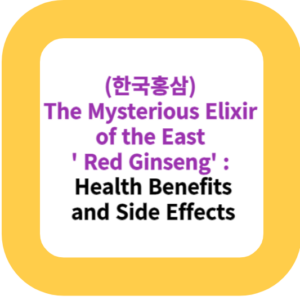What are the potential side effects of overconsuming onions?
Welcome to our latest blog post where we delve into the intriguing world of onions, often celebrated as the “Queen of Vegetables” for their unparalleled nutritional benefits and widespread popularity.
This post explores the vast array of health benefits that onions offer, from bolstering the immune system with their rich vitamin and mineral content, to their potential in reducing the risk of chronic diseases thanks to their powerful antioxidant and anti-inflammatory properties.
However, it’s not all just about the positives; we also take a closer look at the side effects of overindulging in this pungent vegetable, including digestive discomfort and potential impacts on those with specific health conditions.
Our guide aims to provide you with a balanced perspective, offering tips on how to enjoy onions in moderation and how to incorporate them into your diet in a way that maximizes their health benefits while minimizing any adverse effects.
Whether you’re a culinary enthusiast eager to explore the flavors that onions add to dishes or someone looking to enhance your diet with nutritious foods, this post is your go-to resource for all things onion. Join us as we unpack the complexities of this staple ingredient and how it can contribute to a healthier, more flavorful life.
What are the potential side effects of overconsuming onions?

Introduction
Onions, often hailed as the “Queen of Vegetables,” stand out for their exceptional nutritional profile and are the most widely cultivated vegetable around the globe. These kitchen staples are not only integral to culinary traditions worldwide but also offer a plethora of health benefits.
Rich in essential vitamins such as vitamin C, B vitamins, and vital minerals including iron, potassium, and calcium, onions contribute significantly to various aspects of health. They bolster the immune system, regulate blood sugar levels, enhance bone density, may reduce the risk of certain cancers, and foster digestive health.
Beyond their nutritional value, onions boast an array of medicinal properties, such as antioxidant, anticancer, anti-inflammatory, antibacterial, and antiviral effects, making them a powerful ally in the prevention and management of chronic diseases.
The Health Benefits of Onions
Rich in Nutrients: Onions offer a bounty of vitamins and minerals essential for maintaining good health. They are a rich source of vitamin C, which supports the immune system, and B vitamins, which are crucial for metabolism. Minerals like potassium and manganese found in onions play a role in maintaining healthy nerve function and bone health.
Antioxidant Power: The antioxidants in onions, including the well-known quercetin, help protect the body against oxidative stress, potentially reducing the risk of chronic conditions such as heart disease, diabetes, and cancer.
Heart Health Promotion: Studies have indicated that regular consumption of onions can have a positive impact on heart health. Onions can help manage blood pressure and cholesterol levels, contributing to cardiovascular wellness.
Anti-Inflammatory Benefits: The anti-inflammatory compounds in onions can mitigate inflammation throughout the body, offering protection against a variety of health issues linked to chronic inflammation.
Potential Side Effects of Overconsumption
While onions are undoubtedly beneficial for health, excessive intake can lead to several discomforts and health issues, particularly for certain individuals. These can range from digestive problems to more serious health conditions related to excessive potassium intake.
Digestive Issues: Onions contain fructans, a type of carbohydrate that can be difficult for the gut to digest. For some people, consuming large amounts of fructans can lead to bloating, gas, and abdominal pain.
Breath and Odor Concerns: The strong, pungent odor of onions can linger on the breath and contribute to body odor, which may be unpleasant for some people.
Allergic Reactions: Although uncommon, onion allergies do occur and can range from mild irritation to severe allergic reactions, necessitating avoidance for affected individuals.
Exacerbation of GERD Symptoms: For individuals with gastroesophageal reflux disease, high onion consumption may aggravate symptoms by relaxing the lower esophageal sphincter, leading to discomfort and acid reflux.
Guidelines for Balanced Onion Consumption
To harness the health benefits of onions without experiencing the adverse effects, it’s crucial to find a balance in consumption.
Moderation is Key: Incorporating onions into your diet in moderation is advisable, especially if you are prone to digestive issues. Limiting intake to a reasonable amount can help avoid the negative effects of overconsumption.
Consider Cooking Methods: Cooking onions can reduce their potential to cause digestive discomfort and may make them more palatable and easier to digest for some individuals.
Stay Hydrated: Drinking plenty of water can help mitigate some of the digestive discomforts associated with high onion consumption, such as bloating and gas.
Personalized Dietary Advice: For those with specific health concerns or dietary restrictions, consulting with a healthcare provider or a dietitian can provide tailored advice that considers individual health needs and dietary preferences.
Conclusion
Onions are a versatile and nutritious addition to the diet, offering a unique blend of flavors and a host of health benefits. However, as with any food, it’s important to consume onions in moderation to avoid potential adverse effects.
By incorporating onions into a balanced and varied diet, individuals can enjoy the culinary versatility and health advantages they offer. For those with specific health conditions or dietary concerns, seeking advice from a healthcare professional can ensure that onion consumption is aligned with their health goals and dietary needs, maximizing the benefits while minimizing any risks.










